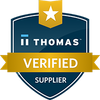- No products in the cart.
Ultimate Guide to Finding the Best Vendor Managed Inventory

Vendor managed inventory programs (VMIs) are an increasingly necessary component of the laboratory supply chain, providing cost savings and peace of mind. In contrast to a traditional vendor-customer relationship, where customers place orders on the basis of their calculated needs and the supplier subsequently fulfills those orders, vendor managed inventory programs remove the burden from the buyer. Using a vendor managed inventory program, the inventory of the customer is calibrated by the vendor, who measures the inventory directly and then stocks the lab with an appropriate amount of each needed item.
While some lab managers and manufacturing executives may hesitate at the idea of having a third party both place and fill the orders for necessary supplies, most are quickly won over by learning more about the compelling features and benefits of leading VMIs. In particular, VMIs are significantly more efficient than customer-managed inventories, thanks to the numerous economies of scale which suppliers can utilize. Many laboratories experience robust cost savings—and more productive personnel—when they transition to using a vendor managed inventory program.
What's the Role of a Vendor Managed Inventory System?
From an industry perspective, VMIs are appealing for several reasons. First, they are a convenient way to keep laboratory personnel focused on tasks which are their core competency. Second, having an outside vendor manage a laboratory's resupply can decrease unexpected shortages of supply. Finally, VMIs are effective at reducing the slack in the supply chain, which helps to save costs.
All vendor managed inventory programs:
- Track the disposition and location of consumables which fall under the vendor's purview
- Shift the burden of order sizing from the laboratory to the supplier
- Shift the problem of calculating replenishment frequency from the laboratory to the supplier
Tools Needed To Implement a Vendor Managed Inventory System
The tools needed to take advantage of the benefits of a VMI include software, delivery infrastructure, and inventory management personnel. Most importantly, however, is the supply chain of the supplier themselves.
Suppliers which can leverage their ties to manufacturers and their clientele to make bulk orders can negotiate better prices, which subsequently cuts costs for their customers. Similarly, suppliers with a powerful outbound logistics and delivery system can keep delivery costs low while providing exactly what their customers need, right when they need it.
Choosing a Vendor Managed Inventory System With Extra Features
Picking the best VMI requires a basic familiarity with the marketplace. Not all suppliers are created equal, nor are all suppliers ready to take on new accounts of all sizes. Choose a VMI from a supplier that offers additional services to maximize cost savings and minimize supply disruptions.
The extra features of the best vendor managed inventory programs may include:
- A dedicated customer service and inventory management team for each account
- Identifying cost savings opportunities in outbound shipping operations
- Help to identify opportunities for cost savings by changing purchasing schedules
- Providing personalized training for each account's personnel
- Rapid shipping to key regions
- Helping to setup initial inventory
- Suggest optimized storage configurations
- Protect inventory data from unauthorized access
- Provide customizable inventory reports
- Describe trends in SKU usagecess
In other words, the best VMIs have extra features which help them to outshine the competition. In turn, the group outsourcing their supply chain operations will perform more efficiently, thereby increasing their competitive advantage within their industry as well.
The Five Things to Look Out For When Picking a Vendor Managed Inventory System
Because of how significant a vendor managed inventory program can be for a growing company's bottom line, each of the elements separating the best programs from the average programs are worth discussing in detail.
Inventory management and forecasting

Keeping the laboratory supply line stocked with the right materials is difficult because predicting demand for certain types of consumables is very difficult. Even for fundamental laboratory items like gloves, wipes, and aprons, there can be unpredictable fluctuations in usage—especially when training new personnel. The traditional solution to these fluctuations is to maintain a substantial buffer of extra inventory. However, even with a buffer, maintaining enough essential supplies for an organization as it grows can be very challenging.
To effectively model a laboratory's inventory utilization, VMIs track inventories over time and measure the fluctuation of goods within the inventory so as to schedule replenishment before supplies run out. Because this tracking occurs on a regular schedule—sometimes as frequently as once per day—any changes in the underlying utilization rates within an organization are reflected immediately. This means that laboratories which use VMIs reduce the risk of running out of necessities like gloves, even if they double their workforce in a short period of time.
The replenishment engine

The act of replenishing inventories is also much simpler with vendor managed inventories. Laboratories frequently use their personnel to perform replenishment operations. But the designated logistics managers are often wearing other hats at the same time. This means that keeping the inventory in a perpetual state of overflowing is frequently an intentional but inefficient choice to avoid any chance of running dry for key supplies.
While this ubiquitous “pay, cram, and pray” method of stocking inventories is effective at warding off shortages, many supplies like solvents are flammable or otherwise dangerous. Because of laws regulating the quantity of these chemicals that laboratories are allowed to have on hand, overstocking may be a liability legally. Aside from properly calibrating inventory inflows against gluts or shortages, VMIs help companies to reduce the inefficiency of keeping too many low-turnover supplies on hand. Laboratories can save on precious floorspace as a result—and they might even get a few tips regarding how to optimize storage space to make access and resupply easier than ever.
Efficient delivery systems

Effective VMIs keep lead time extremely low, because lowering lead time reduces inefficiency in the supply chain. On-time and on- schedule delivery of supplies is at the heart of every vendor managed inventory program. However, the delivery operation can’t stop at being on time; frequently, miscalculations or accidents require unscheduled deliveries of key supplies on short notice. This means that the vendor needs to have delivery resources which can be mobilized in response to unforeseen demand from customers. In other words, the delivery schedule needs to be both perfectly reliable but also extremely flexible.
When inventory is managed by an outside party, it also means that the customer can gain access to faster turnaround than they would be able to get from a manufacturer. Rather than their customer being out of a critical supply, suppliers can modify the delivery schedule and pass along the necessary goods. As a result, when customers urgently need an unforeseen resupply, the best VMIs have the delivery capabilities to get the right products to where they need to go on a timescale where the delivery can benefit the customer.
More cost savings

The cost savings provided by VMIs are numerous. Major areas of cost savings with vendor managed inventories include:
- Lower inventory carrying costs
- Lower freight costs
- Lower transaction costs
- Lower shoe leather costs of inventory tracking and replenishment
- Lower item costs per unit
- Lower reporting costs
- Lower personnel costs
Depending on the laboratory in question, the distribution of the cost savings among these areas may vary. For instance, smaller laboratories may benefit from lower reporting costs and lower personnel costs, whereas larger labs will reap the largest cost savings from lower freight costs.
Increasing the ease of doing business

Finally, VMIs make maintaining the regular flow of business to be significantly easier than customer-managed inventory systems. The result of these features working in conjunction is that executives use less of their headspace trying to sort out day-to-day details while laboratory staff can spend more of their time on their intended job. Scaling operations upward is no longer a daunting matter of logistical uncertainty but rather a question of efficiently organizing internal resources around goals—exactly the way that a dynamic company should be.
Get Started With Vendor Managed Inventory Today With The “Be A Lab Pro” Program
For laboratories in California looking to maximize the efficiency of their laboratory operations and their supply chain while freeing up their essential personnel for critical labor, the “Be A Lab Pro” vendor managed inventory program from Lab Pro is the best choice in the vendor ecosystem. Thanks to Lab Pro's expertise within the scientific supply space, laboratories which get Lab Pro to handle their inventory management will experience all of the benefits of the best VMIs, including substantial cost savings.
California will always be Lab Pro's home, and serving the market in California more effectively than anyone else is our mission. Consequently, Lab Pro offers next day ground shipping in California and even same day shipping on selected items. This means that your laboratory will never need to be out of an essential item ever again—even when the unexpected happens.
For over 40 years, Lab Pro has been committed to providing superior vendor-managed inventory systems to laboratories in California and worldwide. Come visit the biggest Lab Supply showroom in California, or contact us online or at 888-452-2776. to inquire about our “Be A Lab Pro” inventory management program.








































